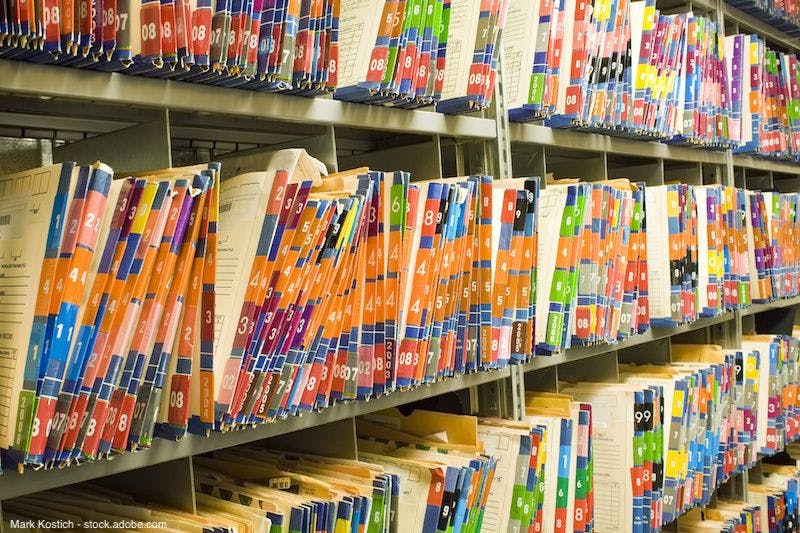Publication
Article
Urology Times Journal
Legislation relieves some of 2022 Medicare fee schedule burden
Author(s):
Increase in conversion factor and delay of sequestration are among changes.
Jonathan Rubenstein, MD

As in years past, the 2022 Medicare fee schedule was going to result in a number of cuts that would have negatively affected reimbursement to providers in all specialties.Due in part to pressure from associations and lobbying groups, Congress stepped in to help providers avoid some of these cuts with the passage of the Protecting Medicare and American Farmers from Sequester Cuts Act, which became law on December 10, 2021.
Mark Painter

The act has a few positive effects on Medicare payments for the 2022 calendar year, including:
• Increase in the conversion factor. Theconversion factor update was scheduled to undergo a –3.81% update. The act added 3% back into the conversion factor, which is now scheduled to be $34.6062, a net change of –0.81% from 2021.
• Delay of sequestration. The act also suspends the full sequestration cuts of 2% through March 31, 2022, and phases the sequestration cut back in with a 1% cut from April 1, 2022, to June 30, 2022. The full 2% sequestration adjustment will begin July 1, 2022. This delay will likely be funded with an increase in the sequestration adjustment in future years, possibly to begin in 2023 unless other action is again taken by Congress.
• Suspension of PAYGO. The Pay-As-You-Go (PAYGO) legislation would have required an additional 4% reduction in Medicare payments for 2022. The act suspended this requirement for 1 year. Funding was not appropriated and must also be addressed in the future.
• Delay of the radiation oncology and radiation therapy centers. The model was delayed at least until 2023, thereby providing relief to those providers affected.
• Delay of cuts to the clinical lab fee schedule. These proposed cuts have been delayed for 1 year.
There were no changes to relative value units as published in the final rule addressed by the act, so the changes noted in our November 2021 article1 will still go into effect; however, the overall impact will be approximately 3% less than projected at the time. The law did not affect payments to ambulatory surgical centers, with the exception of the suspension of the PAYGO adjustment.
Although the medical community overall is appreciative of the relief provided in the act, this still does not adequately address the increased costs of running a medical practice, which leaves many feeling somewhat vulnerable despite these actions. For example, the cost of running a medical practice continues to increase year after year, and the Medicare fee schedule does nothing to address that fact. Although there was an increase in clinical labor rates, this was not funded by an increase in overall Medicare payments, but rather money was taken from practice expense elsewhere, leading merely to a shift of money toward providers with high clinical labor usage and away from providers who are performing office-based surgical procedures with high practice expense but low clinical labor expense. Lobbying efforts will need to continue to address the long-term Medicare plan and the continued shift of money toward clinical labor and away from in-office surgical procedure reimbursement.
Here are a few additional updates and rule changes that need to be addressed in 2022.
New modifiers
-FS: Split (or shared) evaluation and management (E/M) service. This modifier should be added to any E/M service provided in a facility for which the shared/split visit rule was utilized. In 2022, a shared/split visit is billed under the national provider identifier of the physician or advanced practice provider who provided the majority of the E/M service. For time-based billing, this will require documentation supporting the billing provider having spent the majority of the overall E/M time. For component-based billing, the documentation must support that the billing provider provided the majority of the service (expected to be medical decision-making and a portion of the physical examination). Also, E/M rules for 2020 components and time still apply to facility-based E/M services and time.
-FT: Unrelated E/M visit during a postoperative period or on the same day as a procedure or another E/M visit. Report when an E/M visit is furnished within the global period but is unrelated, or when 1 or more additional E/M visits furnished on the same day are unrelated. This modifier was created to address critical care during the global period. It can be used to report E/M and critical care services unrelated to the surgery. Medicare has not clearly delineated the use of the modifier, but it appears to be required for all services meeting the definition of critical care during a global period regardless of whether services are performed by the same physician who provided the surgery.
–93: Synchronous telemedicine service rendered via telephone or other real-time interactive audio-only telecommunications system. Synchronous telemedicine service is defined as a real-time interaction between a physician or other qualified health care professional and a patient who is located away at a distant site from the physician or other qualified health care professional. The totality of the communication of information exchanged between the physician or other qualified health care professional and the patient during the course of the synchronous telemedicine service must be of an amount and nature that is sufficient to meet the key components and/or requirements of the same service when rendered via a face-to-face interaction. This modifier was added to current procedural terminology to accommodate the expansion of telehealth. Medicare has not released requirements for the use of this modifier. Until the requirements are released by your carrier, we recommend that audio-only services provided during the public health emergency continue to be billed with codes 99441-99443 without appending the modifier. Check with your private payer regarding requirements for use of the modifier in conjunction with audio-only covered telehealth services provided to members.
No Surprise Billing Act
We have received a number of questions regarding the requirements for this new law to address out-of-network services and the financial burden for patients who receive services that are provided by a combination of in-network and out-of-network qualified health plans and/or facilities. There were 3 interim final rules released through the latter part of 2021 addressing the requirements of this rule. The requirements are confusing and apply to drugs, facilities, and physicians.
We do not have enough time to fully address the act and its requirements in this article, but we encourage you to learn more about the application of the act to your practice. The following links to Medicare will provide you with Centers for Medicare & Medicaid Services (CMS) summaries of the interim final rules: go.cms.gov/33LUCLw, go.cms.gov/3IbadTQ, go.cms.gov/3IlGNCo, go.cms.gov/3IjxwuB, and go.cms.gov/3nIaLbQ. The AMA has released a toolkit to assist practices in adapting to the new rule available on the web at www.ama-assn.org/system/files/ama-nsa-toolkit.pdf, Physician Reimbursement Services has released a podcast available at www.prsnetwork.com/082 providing further discussion about the program.
Enforcement of the law in the first year will be collaborative as groups learn how to implement the process, including prescribed negotiation of fees with payers for out-of-network payments. This act does increase the burden of patient education with regard to insurance coverage on the primary physician. Depending on your practice participation with insurance companies and the participation of the facilities as well as other physicians involved in the care of your patients, the impact of this act will vary.
Quality Payment Program
Medicare announced that CMS will extend automatic hardship exemptions to all physicians participating in the Merit-based Incentive Payments System (MIPS) program due to COVID-19. If you have not submitted any data to CMS and choose not to submit data to Medicare as a MIPS participant for 2021, you will not be required to file an exemption request. Medicare will set your payment adjustment to 0%. Those physicians who elected to report as groups as well as participants in accountable care organizations will be required to report, but adjustments to scores will be made by CMS to limit the number of physicians receiving a negative adjustment in 2023.
If you have submitted some data to Medicare for 2021 MIPS, you will need to file for an exemption to receive a 0% adjustment. If you feel that you are an exceptional performer and wish to submit MIPS data, you can proceed as you would have under normal circumstances. Remember that the Medicare Access and CHIP Reauthorization Act of 2015, the program that initiated MIPS, is budget neutral; therefore, positive adjustments will be limited significantly due to a lack of funds, with very few providers receiving negative adjustments.
Reference
1. Rubenstein J, Painter M. How the 2022 CMS final rule will affect urologists. Urology Times®. November 16, 2021. Accessed January 19, 2022. https://www.urologytimes.com/view/how-the-2022-cms-final-rule-will-affect-urologists






























